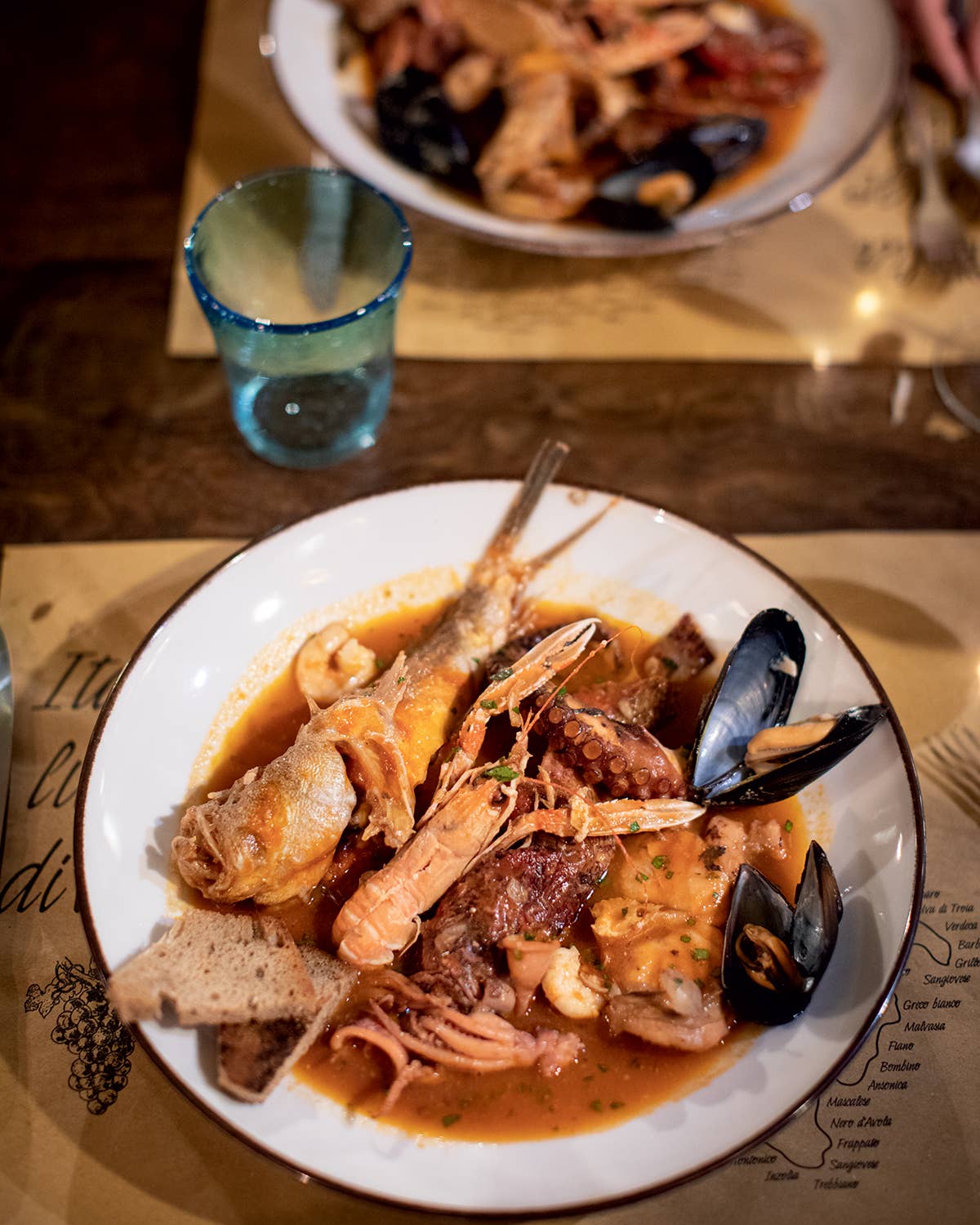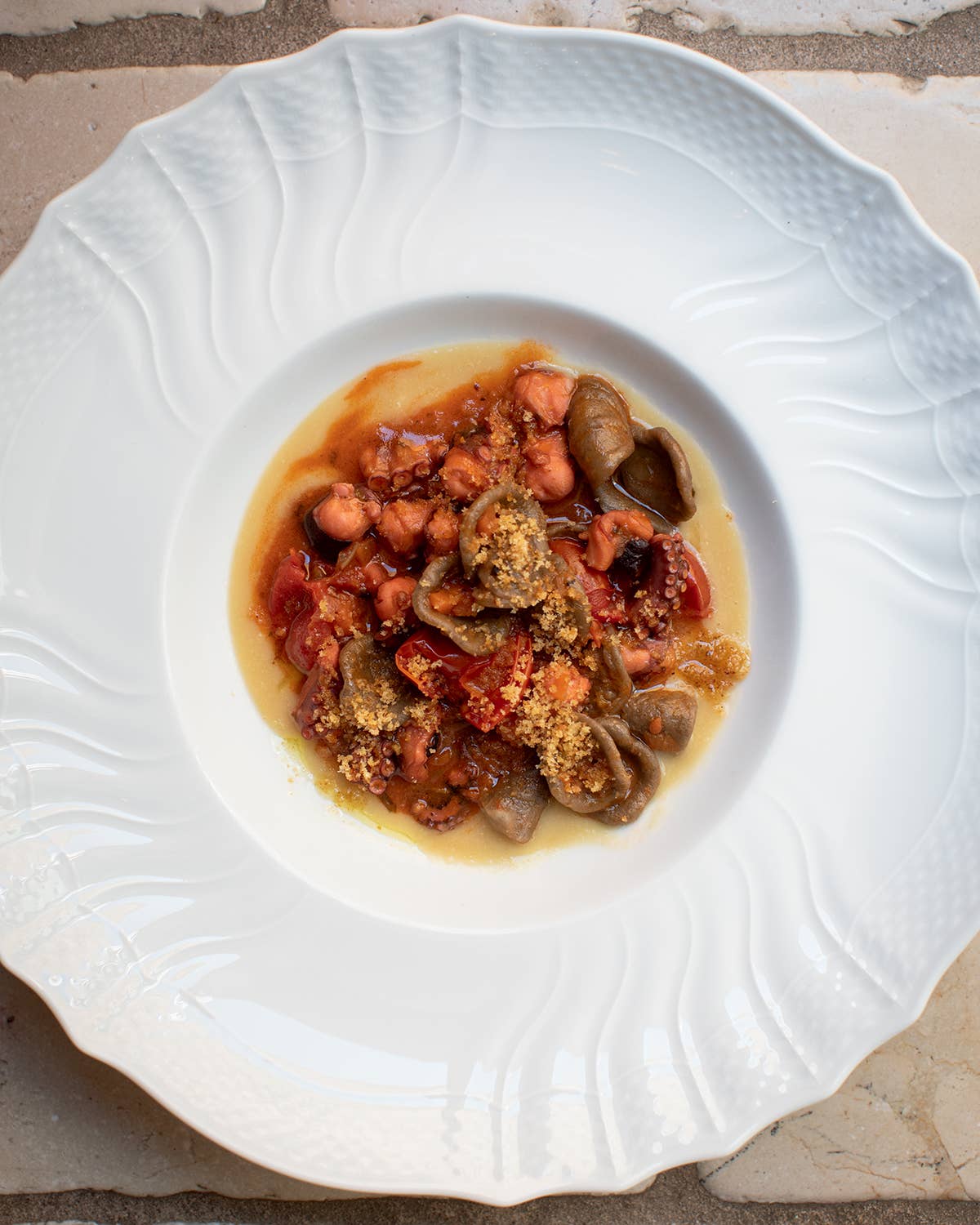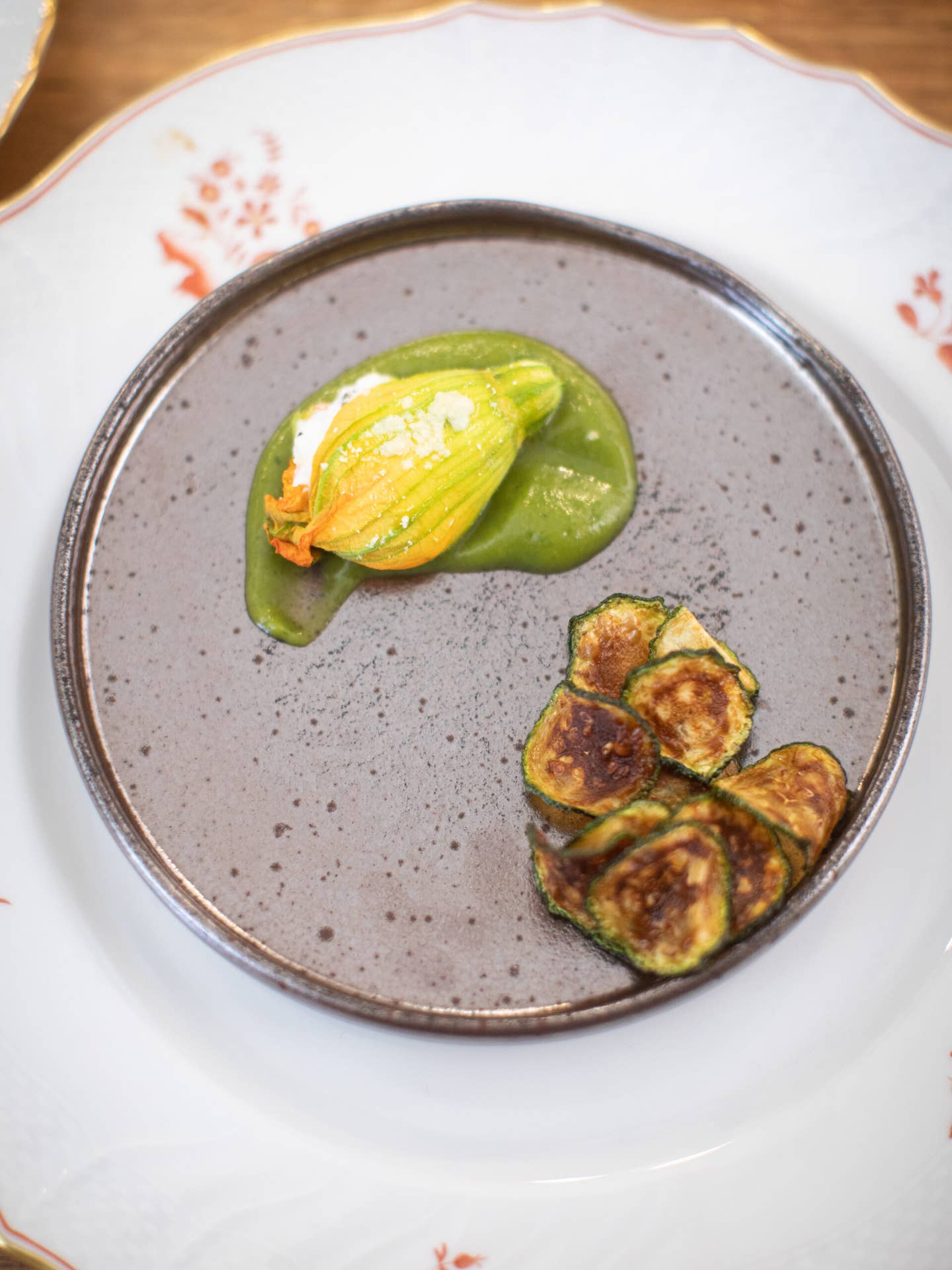Behind a butchery within the city of Martina Franca, Riccardo Ponte claps his large, baseball-mitt fingers, calloused from years of charcoal burns and judo holds, and presents the subsequent plate. Tender chunks of veal lung wrapped in sinister layers of pork fats kind a glistening pyramid on the desk. “Pugliese chewing gum,” he says with a smile, earlier than retreat- ing again to his grill, a central fixture of his store, referred to as Mang e Citt, or “Sit Down and Eat” in Pugliese slang. A lot of the macellerias—butchers that double as casual eating places—have, out of comfort, moved to standard-issue flat-top grills lately. Ponte’s setup, nonetheless, is someplace between a pizza oven and a fire, a sort of infernal cubby gap carved immediately into the wall of his small fluorescent-lit store. Stacks of meat stability precariously on skewers; coals, dispersed in varied piles, create warmth zones measured purely by really feel. Ponte insists that this method, established centuries in the past by the butchers of Martina Franca, makes all of the distinction: “You may style the method,” he says.
I had come to Puglia—the gleaming, postcard-ready wedge of Southern Italy that sticks into the Ionian Sea like a boot heel—to eat. This, I acknowledge, is just not a really unique quest: Elizabeth Gilbert has been there, Stanley Tucci has accomplished that. Spend sufficient time digging by way of information books and instructed itineraries, and also you’d be excused for pondering the one factor in Italy to do is eat.
Once we journey to eat, although, we’re typically searching for a narrative—a story to convey again dwelling, or a transparent, easy-to-digest model of a spot that matches squarely in our personal psychological atlases: The ruby crimson aperitivo glistening within the Tuscan solar, the trapizzino held aloft on the Spanish Steps, the pale inexperienced scoop of pistachio gelato, doled out in a Sicilian alleyway. Or, in Ponte’s case, the small-town, larger-than-life chef, seemingly grief-stricken by your bodily incapacity to simply accept “only one extra” piece of grilled meat.
It’s simple to reach in a spot like Puglia with pre-conceptions about Southern Italy: a scorching, quiet place, the place issues transfer slowly and naps are plentiful. However I rapidly realized that for each particular person doing one thing a method, there may be another person doing the exact same factor—for the exact same causes—a very totally different manner. As one meal bled into the subsequent, I discovered that each time I constructed a narrative out of the meals I ate and the folks I met, each time I assumed I had discovered some definitive sense of what Puglia truly tastes like, it rapidly fell away.
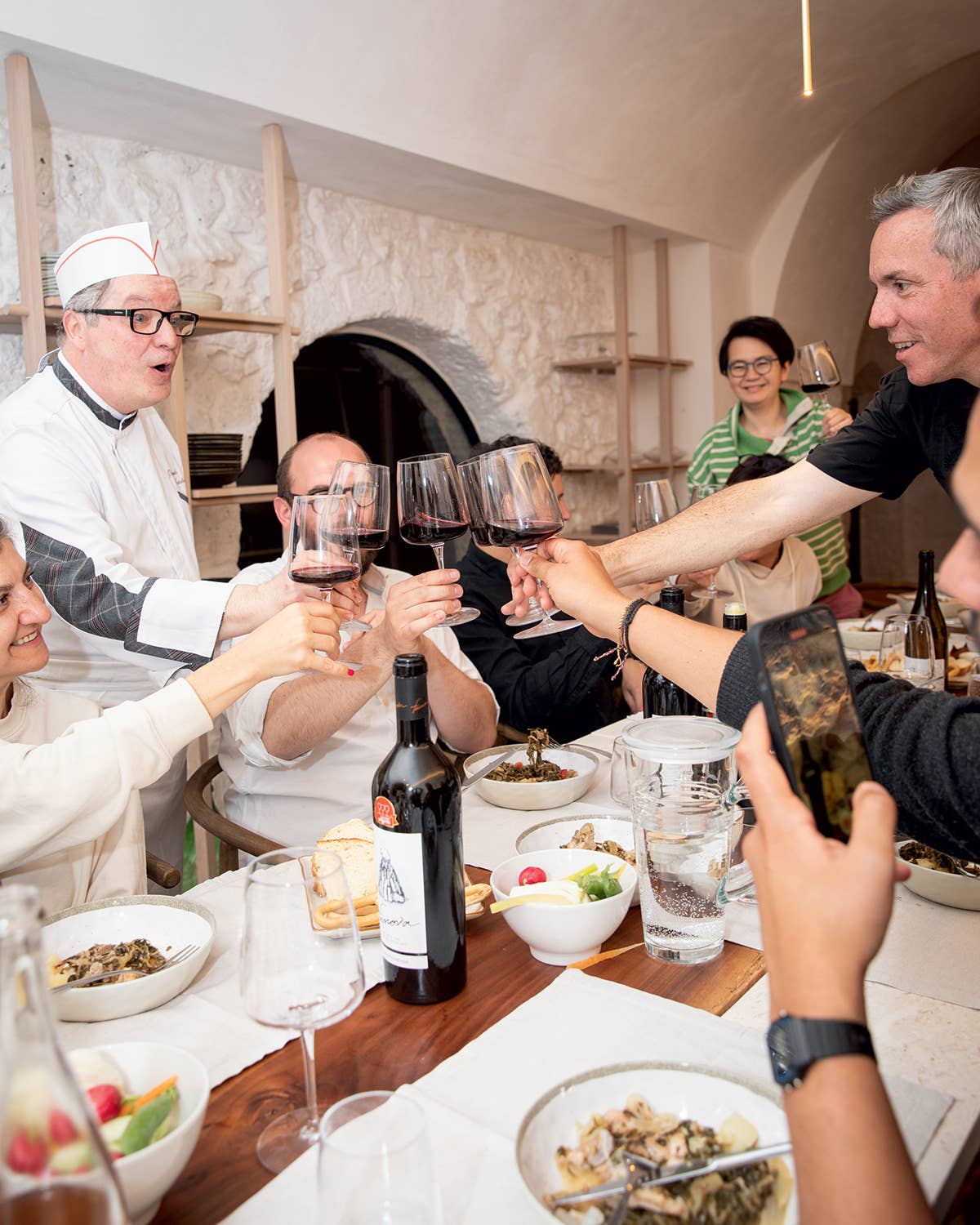
Whereas I want I may take credit score for stumbling upon Ponte’s institution, I used to be a part of a tour group touring by way of the area. Roads and Kingdoms, a web-based journey journal, has, lately, pivoted towards providing small-group, food-centric journeys world wide. Journeys just like the one I took to Puglia are targeted not on big-name eating places, however on providing a backstage move to point out vacationers how the precise sausage will get made, drawing on what co-founder Nathan Thornburgh describes as “an archipelago of fascinating folks.”
If all of it sounds vaguely Bourdainian, that’s not a coincidence. Based in 2012 by Thornburgh and meals author Matt Goulding, the corporate and its journalism was for a few years supported and funded by Anthony Bourdain. Right this moment, Roads and Kingdoms’ journeys actively attempt to keep away from what Thornburgh refers to as “following the umbrella throughout the piazza.” Potential visitors should endure an interview course of to ensure they’re match for the group: Preventing {couples} and Michelin star-hunters have been turned away previously.
Roads and Kingdoms’ shift towards this type of “don’t-call-it-a-group-trip group journey” is indicative of a wider development in journey, one by which entry is all the pieces. Whether or not helmed by cooks, lecturers, or journalists, experiences are being gently curated in a manner that feels uniquely yours as they lodge themselves into your reminiscence. Serendipity, by definition, can’t be manufactured. Oftentimes, the most effective accomplice to the sudden is time—decelerate and stretch out a visit and also you’re sure to satisfy the characters and have the conversations that find yourself solidifying the journey expertise in your thoughts. That’s more durable on an organized tour, however, as these experiences appear to posit, not unattainable.
The fascinating particular person main us on this specific journey was Eugenio Signoroni, certainly one of Italy’s most celebrated meals writers, in addition to the editor of the hotly contested “Osterie d’Italia” guidebooks from Sluggish Meals Worldwide’s publishing home, which listing and overview the most effective conventional eating places throughout Italy. On day one, as golden hour units in on the masseria, or farmhouse, that will function our base, Signoroni explains that this can be a journey to shatter preconceptions, not verify them. “You recognize the tales of the nonna, the Italian grandma and her wonderful cooking?” he asks. “I would like you to realize it’s a complete delusion: My daughter’s grandmother doesn’t know how you can prepare dinner a rattling factor.” It was line for a tour constructed on this type of punk-rock premise, however in speaking to him afterwards, it grew to become clear that the sentiment behind it’s true.
“We wish to construct up this romantic thought of custom,” Signoroni says once I ask what he notices when speaking to first-time guests to Italy. “It makes us really feel safer and extra snug.” 4 years prior, once I visited Puglia for the primary time, I had felt a sort of self-satisfied contentment: Sipping wine and watching a blacksmith engaged on new horseshoes for the stallions he saved behind his store, the reminiscence matches squarely into the romantic. “If we need to actually perceive a spot,” Signoroni says, “we’ve to see it as it’s, not as we expect it needs to be.”
That doesn’t imply you gained’t discover intergenerational recipes and deep-seated heritage in Puglia. This can be a place fiercely happy with its traditions, themselves a mishmash of the regular wave of conquerors who got here to this land over millennia. It’s a delight that has been strengthened by latest historical past too, borne from a long time of being seemed down upon by the remainder of the nation. Lengthy one of many poorest areas in Italy, Puglia was left behind by the industrialization that took maintain within the north. On account of a largely subsistence financial system, cucina povera—actually “poor kitchen”—is the spine of Pugliese delicacies. It’s solely lately, as Puglia has marketed itself as a world vacation spot, that the culinary label has been wielded not with disgrace, however with a sort of reclaimed dignity.
“You recognize the story of the Italian grandma and her wonderful cooking? I would like you to realize it’s a complete delusion.”
At Cibus, a family-run restaurant tucked away in a labyrinth of climbing alleyways within the city of Ceglie Messapica, each dish reveals new layers of com- plexity that belies the sort of catch-all utilitarian implication of cucina povera. The Silibello household gives a crash course within the substances of the Salento area: Lampascioni, typically translated as “bitter onion” however truly the bulb of a sort of hyacinth, takes on the consistency of burnt newsprint when fried, yielding a bitterness that prepares the palate for what comes subsequent. Stringy stracciatella cheese is teleported out of the guts of the burrata balls the place it’s most frequently discovered, and unfold out onto overflowing plates, to be eaten by the dripping forkful. Slices of capocollo and different cuts from the Apulo-Calabrese black pig are organized right into a gradient of richness with clear directions on how you can keep away from blowing out your style buds with hits of lard too early. To convey us again to earth, a Pugliese traditional that emerged from powerful instances: fave e cicoria, a mattress of mashed fava beans, topped with chicory leaves and lashed with olive oil. A ragù follows, made with tender horse meat and ricotta forte (an aged, barnyard-forward cheese with an extended shelf life best for peasant pantries), and juicy, butter-soft slices of beef from the area’s Podolica cow, equally prized for its meat as for its milk.
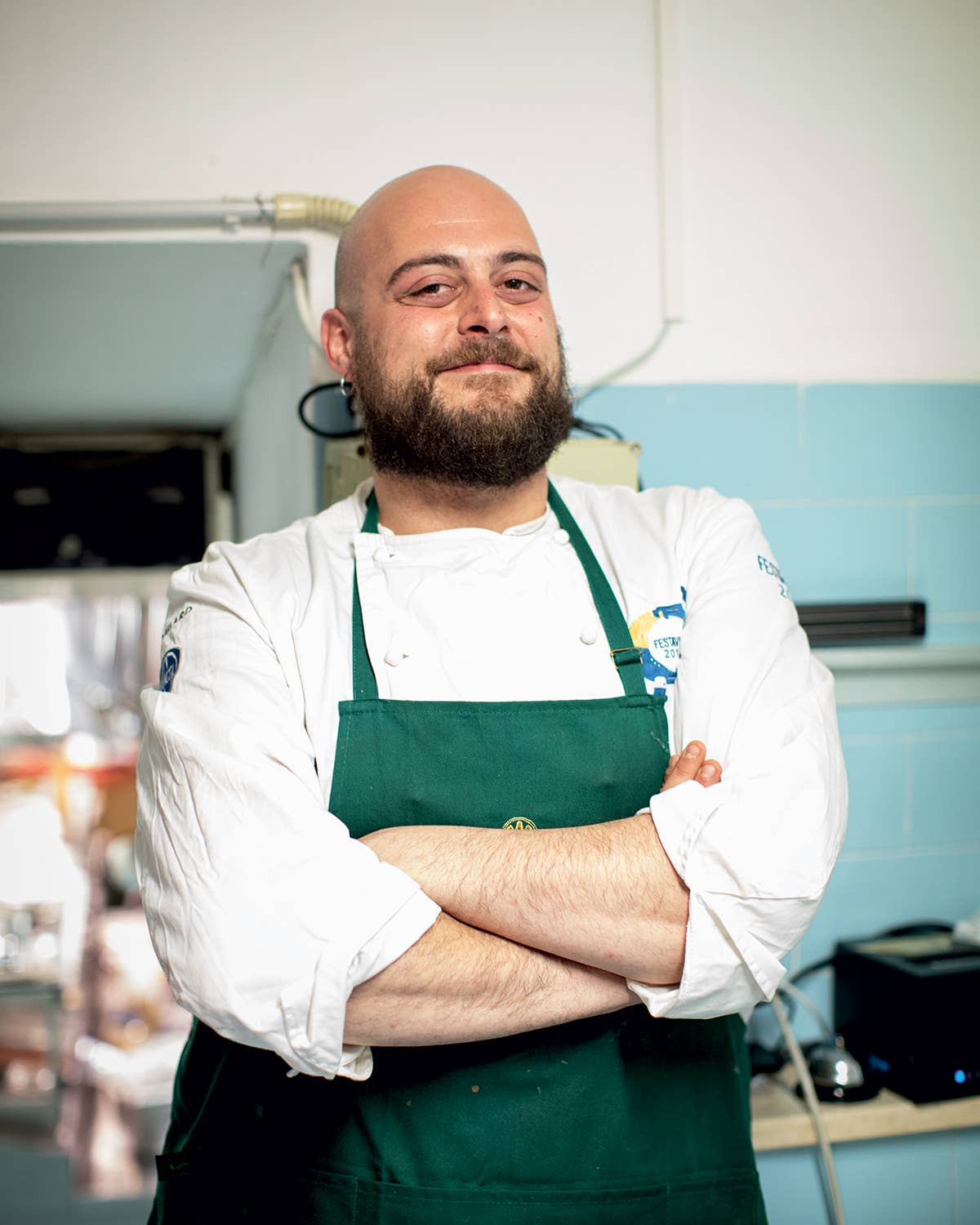
With its familial atmosphere, its give attention to hearty, of-the-soil substances, and its secret, in-house cheese cave, Cibus is the sort of place most vacationers dream about after they dream about Italy. And it’s precisely as satisfying as you may think. Right here, all of Signoroni’s “romantic concepts of custom,” are confirmed to hold a minimum of a basis of actuality. However simply 30 miles away, within the city of Putignano, these imprecise notions of some idealized previous are being deliberately—and ruthlessly—torn aside.
At Osteria Botteghe Antiche, chef Stefano D’Onghia takes most of the similar substances—the identical dishes, even—and brings them right into a sort of parallel universe the place what is understood and established provides technique to what there may be left to be taught. There may be lampascioni right here too, however it’s accompanied by a sort of capocollo pocket, full of chickpea purée. Fave e cicoria turns into a imprecise signpost fairly than a cornerstone of custom: The fava purée is stuffed right into a single grilled inexperienced pepper and served alongside a spoonful of caramelized crimson onions. Ricotta makes an look, too, however it’s imbued with mint and hidden throughout the delicate folds of a zucchini flower. Orecchiette, the ear-shaped pasta typically served in Puglia with broccoli rabe, is made—deliberately, cheekily—with grano arso, burnt grain that for hundreds of years was the one stuff out there to the poorest of the poor. It shares the plate with indulgent chunks of grilled octopus, as if to say look how far we’ve come.
The subsequent evolution of D’Onghia’s menu shall be a push towards sustainability, one thing he argues is on the core of Puglia’s seemingly easy, local-first delicacies. “These days it’s onerous to promote a meat dish for lower than 18 euros, which is unusual for a area like Puglia,” D’Onghia advised me. “I need to take into consideration how you can make cuts of meat that aren’t costly—liver, tongue, offal—simply as scrumptious.” He factors to the octopus orecchiette as a dish that’s changing into simply too costly for him to promote. What wouldn’t it style like, he wonders, if as a substitute of serving the meat, he sous-vide cooked the octopus’s liver, a bit typically discarded by fishermen? Someplace, in some- one’s imagined actuality, a nonna in a sauce-streaked apron can’t consider her ears.
Different days spotlight each the variety of the gastronomic scene and the utter impossibility of becoming it right into a neat bundle. There’s the pork cookout within the sun-slapped courtyard of a pig farm belonging to native producers Salumi Martina Franca. It lasts for hours, and transitions organically into an extended stroll by way of the land the place the animals roam free. At Intini, an olive oil producer exterior of Alberobello, a fourth-generation maker explains how some guests are upset to see gleaming industrial tools as a substitute of charming picket presses. “If I made it the normal manner, it wouldn’t be good,” Pietro Intini says. “The actual revolution in olive oil manufacturing solely occurred 20 years in the past.”
Even the place traditions do stay intact, modernity creeps in. In Taranto’s Mare Piccolo, an inland sea, Luciano Carriero, a mussel farmer from a household of mussel farmers, explains how a tight-knit community of households has come collectively to create a cooperative, holding the sticky fingers of organized crime away. As we float across the bay, he attracts lengthy necklaces of the bivalves out of the water and shucks them on the spot, to be eaten uncooked, paired with bites of provolone cheese and washed down with glowing wine. He insists I attempt a couple of. “It’s like an enormous field of sweets,” Carriero says, one-upping Forrest Gump ceaselessly. “Every mussel tastes somewhat totally different.” That evening, I observe his bounty to its remaining resting place at Antica Osteria la Sciabica, tucked away alongside a seaside promenade within the metropolis of Brindisi. The seafood soup doubles as a taxonomy of marine life: fish, squid, shrimp, and, sure, mussels, all afloat in a wealthy, tomato-based broth. The restaurant buzzes with the sounds of spoons scraping the final drops from drained bowls.
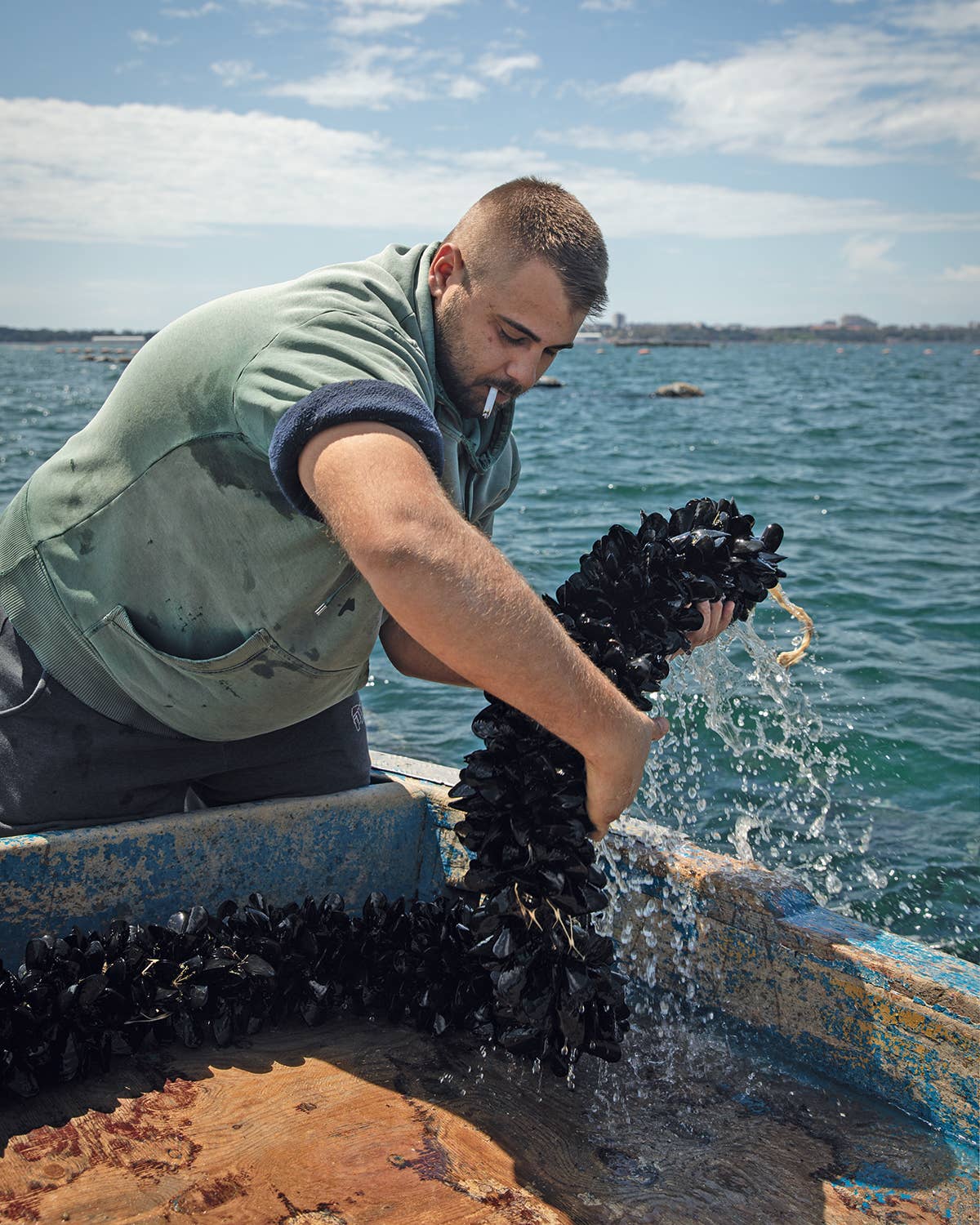
There’s something about visiting the so-called “Outdated World” as a resident of the so-called “New” one which units off a sort of rabid, voyeuristic urge to witness “custom.” Some elements of Puglia, just like the family-run cheese cave hidden below a bookshelf at Cibus, or the focaccerias in each village churning out flatbreads in the identical oven for generations, do really feel caught in time, and I really feel an nearly involuntary delight at any time when I encounter folks doing issues as they’d been accomplished since earlier than Italy was Italy. However I quickly discover myself most trying ahead to the moments of disruption. I had been warned, in a manner, by Signoroni’s meditations on what we frequently count on from so-called “genuine experiences.” I had caught little rebellions within the type of culinary innovation, and within the delicate twisting of conference. However nothing, it was changing into clear, is that easy.
“Someplace, in somebody’s imagined actuality, a nonna in a sauce-streaked apron can’t consider her ears.”
On the outskirts of Bari, in Altamura, I meet Vito Dicecca who, alongside along with his siblings, has inherited the household cheesemaking custom, which he treats with all of the sacrosanct rulebook-abidance of a mad scientist. Out of a comparatively small kitchen, the Dicecca household whips up round 800 kilos of lactic heresy day-after-day. “Anybody in Puglia could make small cheese,” Dicecca says earlier than pointing to his brother Paolo who’s within the means of tying a mozzarella knot the scale of a new child. “I need to make huge cheese.” He reveals off a milky goat cheese concoction, finest used as a dip for crispy bagel-shaped taralli crackers (“the most effective drunk meals,” Dicecca calls it). A vivid orange cousin to caciocavallo goes by the title “Life on Mars.” Whereas standard knowledge says mozzarella must be constituted of buffalo milk, the Dicecca household makes a goat milk model, granting the often delicate cheese a deliciously grassy funk.
To attempt Dicecca’s wildest creation, I’ve to attend till we depart the store in Altamura and journey into the pinewoods of the Mercadante nature reserve. There, the household has opened Child Dicecca, a cheese bar that serves as a tasting room and satellite tv for pc for experimentation. After the sort of lengthy, languorous meal I’ve grown accustomed to in Puglia, Dicecca brings out dessert. Wanting extra like a cake than a wheel of cheese, this has, for good purpose, grow to be the Diceccas’ most well-known act of sacrilege. To create it, he drops a wheel of blue cheese right into a barrel of primitivo wine, the place it soaks for 100 days. Afterwards, it’s topped with candied bitter cherries, including a tartness to the indulgent candy and salty mixture. It’s reduce into wedges which might be inten- tionally about 12 instances too huge for one particular person to deal with and served with much more primitivo wine. It’s referred to as, Dicecca tells me with a conspiratorial grin, “Amore Primitivo.”
This, I feel, looks like the sort of one that takes nice delight in his innovations, who revels in the truth that he’s difficult custom with every new wacky thought. Does he spend as a lot time fascinated by authenticity as I do? “Are you anxious some- one goes to take your thought, or attempt to do another, worse model of it?” I ask. I think about grocery shops lined with tasteless, innocent cheeses, smothered in neon jelly.
“It doesn’t matter who invents the factor or who has the unique story,” Dicecca says whereas doling out the subsequent in an limitless collection of wine refills. “It solely issues who does it finest.”


